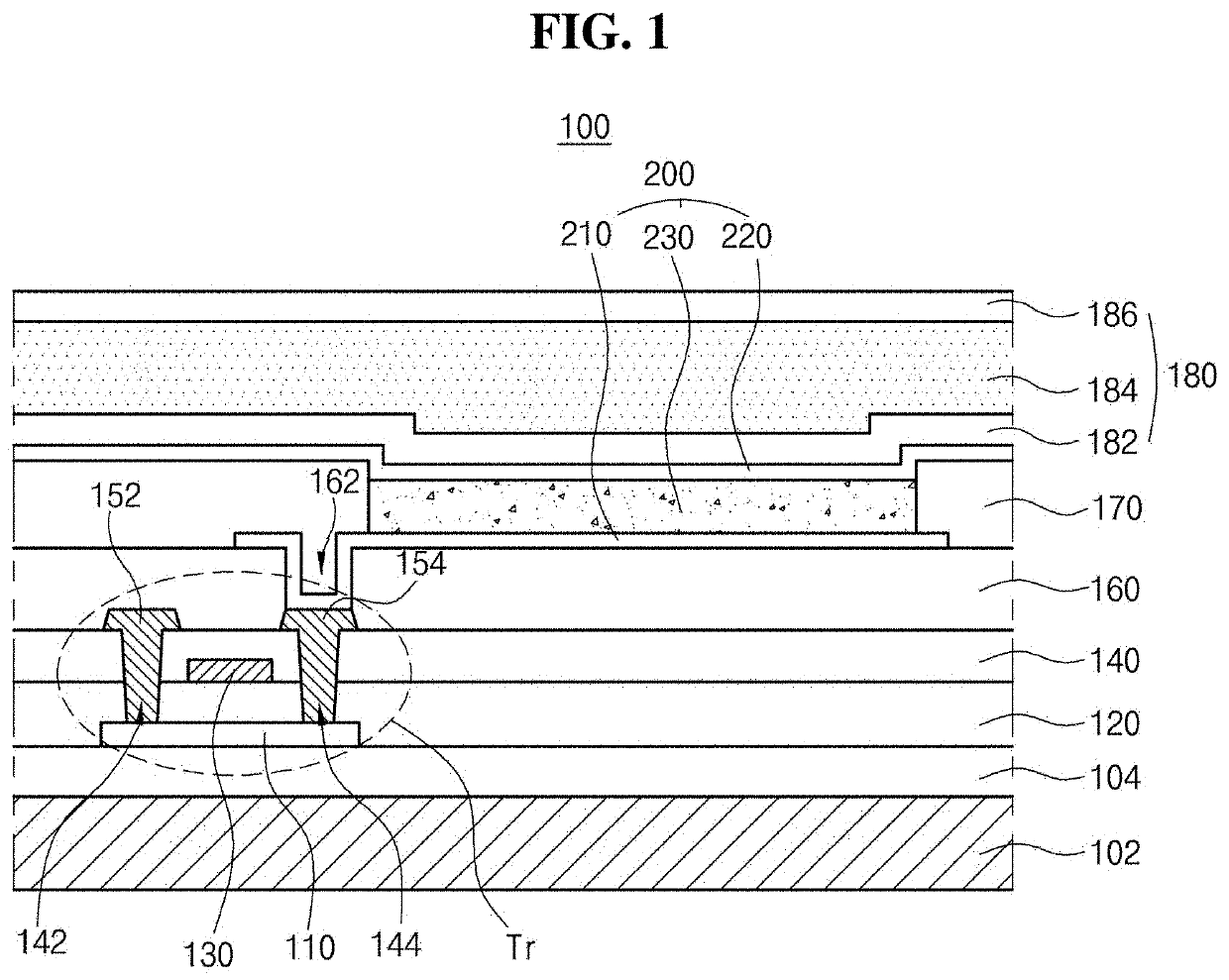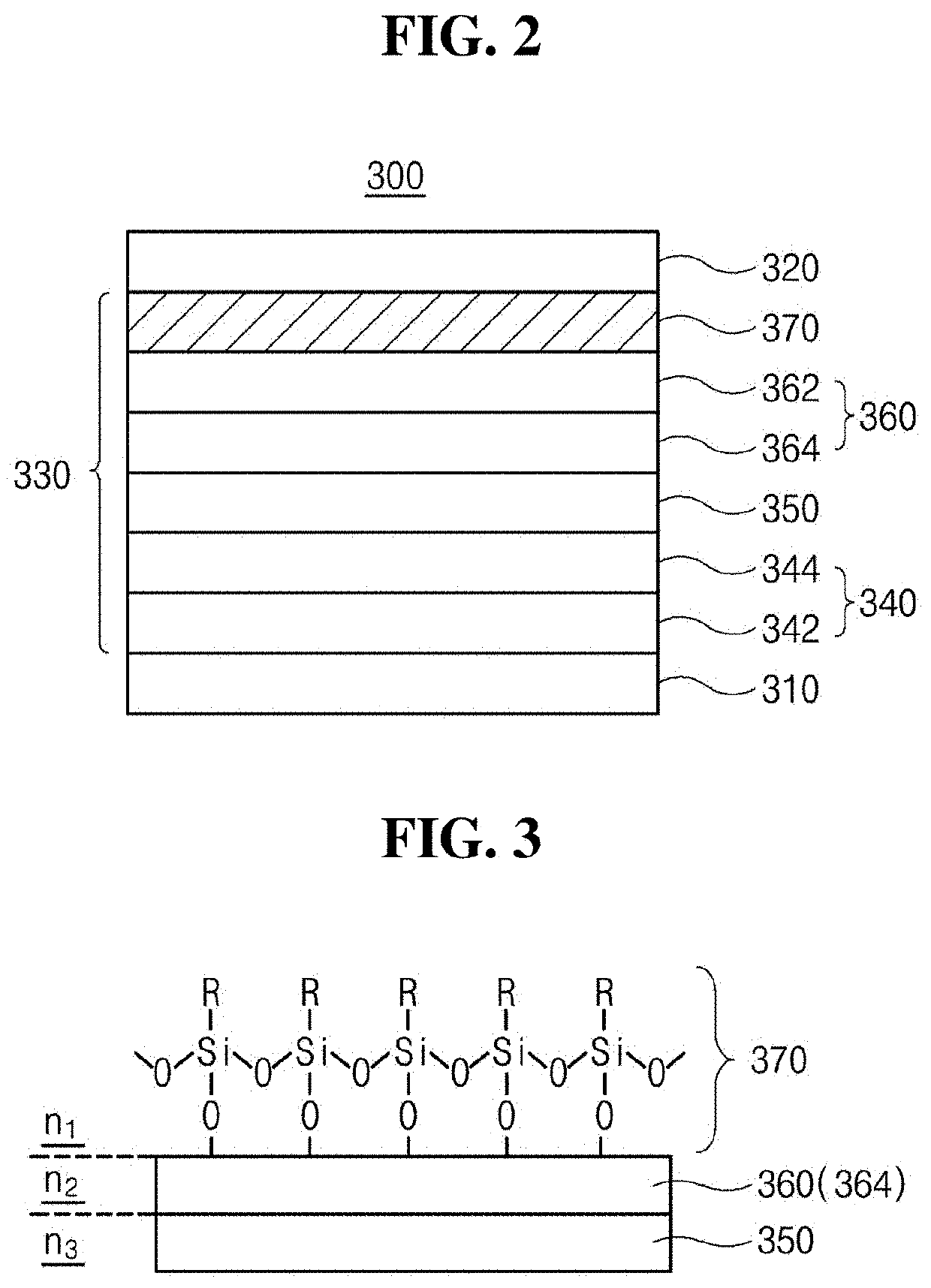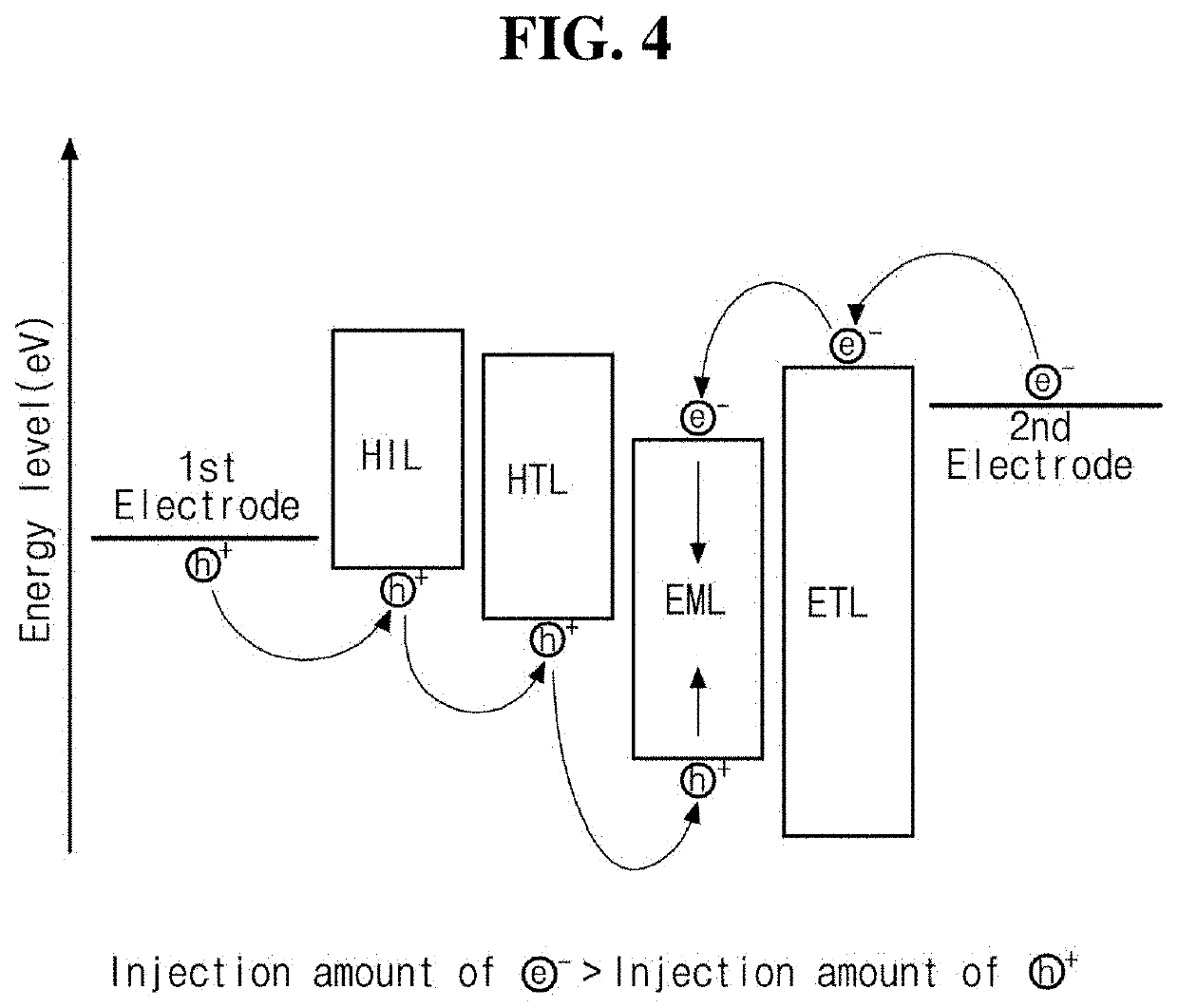Light emitting diode and light emitting device having the same
a technology of light emitting diodes and light emitting devices, which is applied in the direction of basic electric elements, semiconductor devices, electrical apparatus, etc., can solve the problems of shortening the luminous life of oleds, oleds that have not achieved the required high color gamut, and the limitation of realizing the desired level of luminous efficiency, so as to improve luminous efficiency and enhance charge mobility and out-coupling efficiency
- Summary
- Abstract
- Description
- Claims
- Application Information
AI Technical Summary
Benefits of technology
Problems solved by technology
Method used
Image
Examples
example 2
on of Electron Only Device Including Charge Control Layer
[0131]An EOD was fabricated by repeating the process as Example 1, except using ZnCaO in place of ZnO as ETL material.
experimental example 1
l Property of EOD
[0134](1) Measurement of Electron Mobility
[0135]Electron mobility for each of the EOD fabricated in Examples 1-2 and Comparative Example 1-2 was measured. Electron mobility in each EOD after 1 hour, 12 hours, 24 hours and 48 hours was measured. Measurement results are indicated in the following table 1 and FIG. 6. In case of the EODs includes only ETL of metal oxide as Ref. 1 and 2, a metal oxide film is formed on the surface of ETL as an oxidation by O2− defect occurs on the surface of ETL consisting of metal oxide which is vulnerable to oxygen and moisture. As a result, as the electrical properties of the ETL are lowered, the electron mobility is rapidly reduced and the stability of the material is deteriorated. On the contrary, when the CCL is formed on the surface of the ETL as Examples 1 and 2, as the CCL enables the surface defects of the ETL to be removed, the stability of the material in ETL and good electron mobility was maintained despite the lapse of time...
experimental example 2
nents
[0138]Each of the EODs in Example 1 and Ref. 1 was de-capped to analyze components in the film consisting only of ETL-CCL (example 1) and ETL (Ref. 1). FIGS. 8 and 9 illustrate XPS (X-ray photoelectron spectroscopy) analysis results and FIG. 10 illustrates FT-IR (Fourier transform Infrared Spectroscopy) analysis result. As illustrated in FIGS. 8 and 9, each of an energy peak of functional group including nitrogen derived from APTES which is used for forming CCL (N is derived from amino group at the APTES terminal) and an energy peak formed by siloxane bonds between the surface of the ETL and APTES or by oxane bonds among APTES molecules (Si 2P) was detected in the ETL-CCL thin film constituting the EOD in Example 1. In addition, as illustrated in FIG. 10, unlike the thin film consisting of only the ETL of ZnO in Ref. 1, amino group, which is a part of APTES used for synthesizing polysiloxane-based material, was detected in the thin film including the CCL having polysiloxane-bas...
PUM
| Property | Measurement | Unit |
|---|---|---|
| thickness | aaaaa | aaaaa |
| thickness | aaaaa | aaaaa |
| thickness | aaaaa | aaaaa |
Abstract
Description
Claims
Application Information
 Login to View More
Login to View More - R&D
- Intellectual Property
- Life Sciences
- Materials
- Tech Scout
- Unparalleled Data Quality
- Higher Quality Content
- 60% Fewer Hallucinations
Browse by: Latest US Patents, China's latest patents, Technical Efficacy Thesaurus, Application Domain, Technology Topic, Popular Technical Reports.
© 2025 PatSnap. All rights reserved.Legal|Privacy policy|Modern Slavery Act Transparency Statement|Sitemap|About US| Contact US: help@patsnap.com



